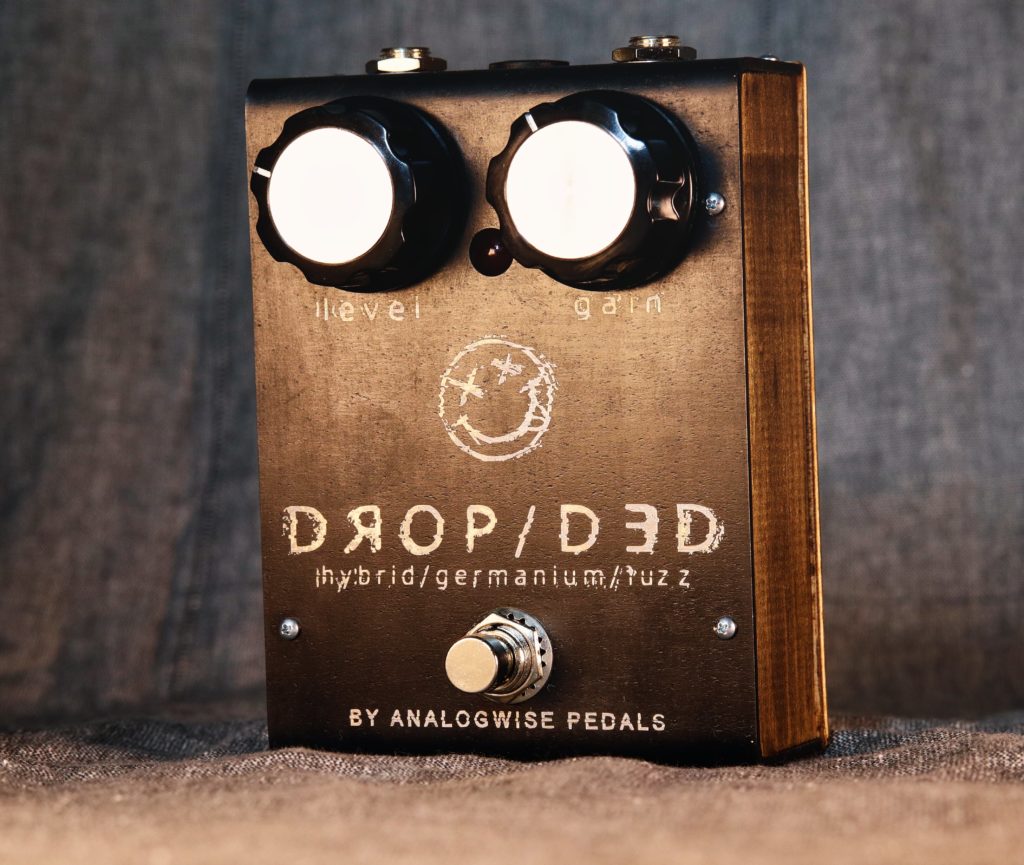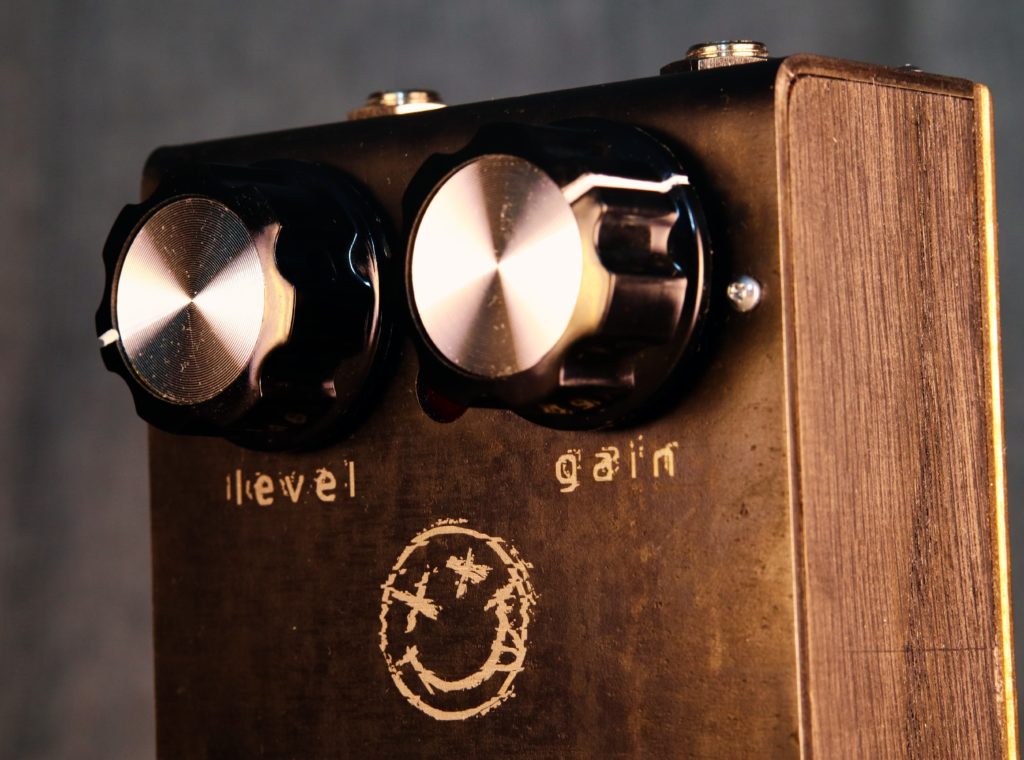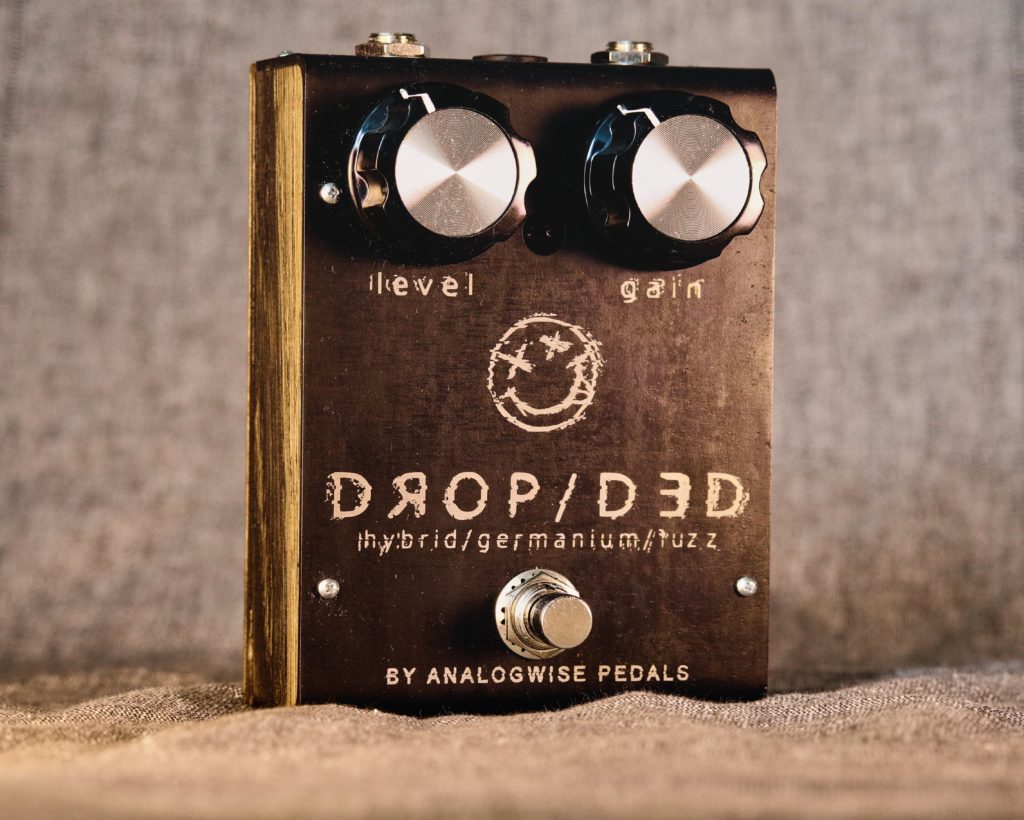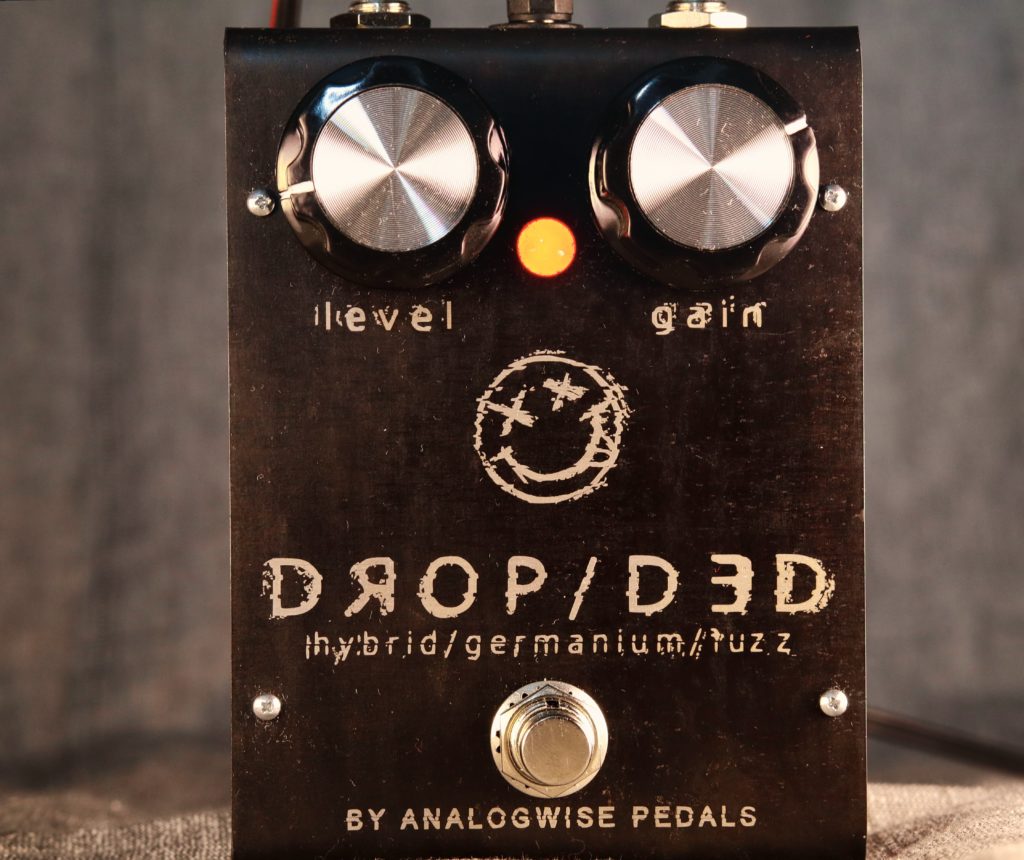DROP/DED

“The size of those knobs…
somebody’s overcompensating!”
– my shrink
Two knobs and a footswitch. What can go wrong?
DROP/DED was born in the most beautiful way a guitar pedal can dream of: out of curiosity and experimentation. I whipped up a seemingly generic fuzz circuit as a portion of a different, larger project. The tones it spat out, and the way it yelled and snarled at me stole my heart on the spot. I had no doubt that circuit deserved its own, separate build.
Here it is in a nutshell:
- hybrid, half silicon, half germanium design;
- SUPER loud. Never start it with both knobs at noon;
- true bypass;
- standard 9V adapter (go for 12 V for more headroom and volume)
So what’s it got under the hood? Two transistor stages. The first one is built around a modern, high gain silicon transistor, biased almost like a class A amplifier – the aim of this stage is to boost as much signal as possible without overdriving. And it works! If it was this stage alone, you could only get some dirt towards the end of the “gain” knob travel.
But it’s not the case. That super-boosted signal hits another stage. This one is built around a vintage, NOS germanium transistor and it just LOVES to breakup and overdrive and distort. So many sweet spots there. The more gain you add, the grittier the sound will become. It sometimes almost feels like it’s about to break over to the mis-biased, dying battery sounds, but it never does. It sustains forever.
As you’ve probably noticed, DROP/DED has no tone control. A little bit of that is going on internally. The circuitry is designed so it shaves juuuuust a tiniy bit of treble off your tone. Just to knock the edge off. The idea was to keep it as raw as possible – so it’s mostly tone-neutral. It should take a baritone or bass guitar with no issues.
The pedal is hand-made top to bottom. The top plate is made out of carbon steel, turned black by the process called “rust bluing”. A fascinating process in its own right. In short: cowboy era technology! The black layer is quite resilient to scratches, but you can treat it with a wipe of a slightly oliy rag from time to time. This will restore the depth of the black finish. Avoid cleaning it with rough chemicals, acidic cleaners (vinegar is a no-no) or water baths. You know, baths, electric equipment, bad.
The sides are made out of solid wood – and not just any store-bought lumber, but dumpster rescuees. Instead of allowing them to rot in landfill, I cut them in pieces and made pedal enclosures. My two cents in the “saving the planet” dispute. That means there might be some dings or even holes in your pedal! That doesn’t mean you received a beat-up unit somebody else had abandoned. That’s not a bug, that’s a feature! The sides will quite enjoy some oil or wax on them from time to time, too! Will restore that slight shimmer.








Demo video:
or place an order here:
